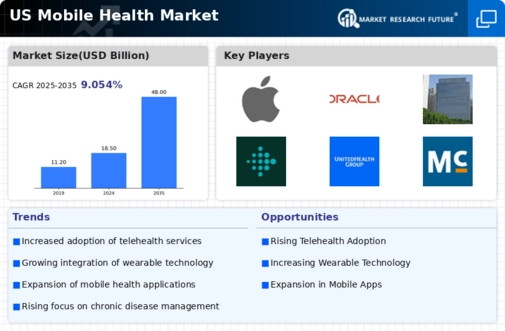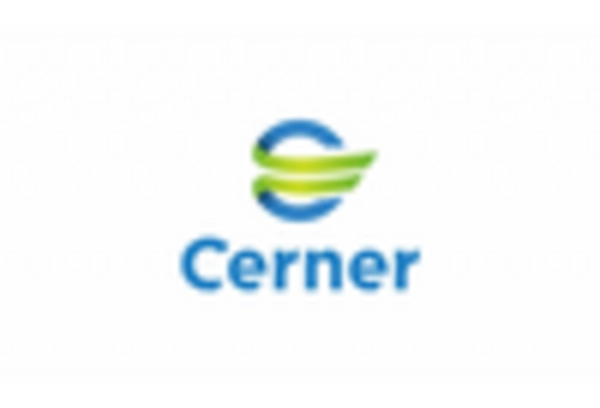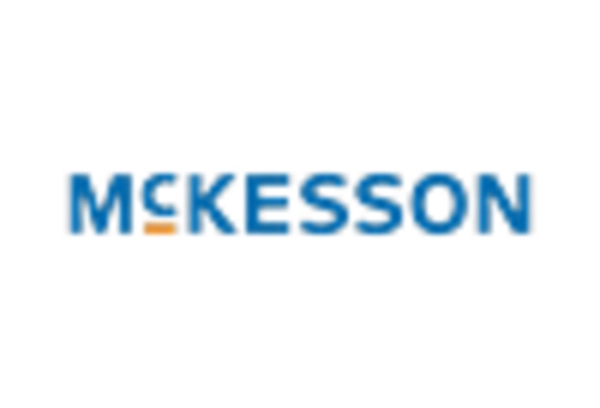Growing Focus on Preventive Healthcare
The mobile health market is witnessing a growing focus on preventive healthcare, driven by an increasing awareness of the importance of early intervention. Consumers are becoming more proactive about their health, seeking tools that help them monitor vital signs and lifestyle choices. This shift is reflected in the rising popularity of mobile applications that offer features such as fitness tracking, dietary advice, and mental wellness support. As a result, the mobile health market is likely to expand, with projections indicating a compound annual growth rate (CAGR) of around 25% over the next few years. This trend suggests that preventive health solutions will become a cornerstone of the mobile health market.
Rising Demand for Chronic Disease Management
The mobile health market is experiencing a notable surge in demand for chronic disease management solutions. As the prevalence of chronic conditions such as diabetes and hypertension continues to rise, patients increasingly seek mobile applications that facilitate self-monitoring and management. According to recent data, approximately 60% of adults in the US live with at least one chronic condition, which underscores the necessity for effective mobile health interventions. These applications not only empower patients to take control of their health but also enable healthcare providers to monitor patient progress remotely. This trend is likely to drive innovation within the mobile health market, as developers create more sophisticated tools tailored to chronic disease management.
Increased Investment in Digital Health Startups
Investment in digital health startups is significantly influencing the mobile health market. Venture capital funding for health tech companies has surged, with investments reaching approximately $14 billion in 2025 alone. This influx of capital is fostering innovation and enabling startups to develop cutting-edge mobile health solutions. Investors are particularly interested in applications that address specific health challenges, such as mental health and chronic disease management. As these startups bring new technologies to market, they are likely to enhance the overall landscape of the mobile health market, making it more competitive and diverse.
Regulatory Support for Mobile Health Innovations
Regulatory support is emerging as a crucial driver for the mobile health market. Government agencies are increasingly recognizing the potential of mobile health solutions to improve healthcare delivery and patient outcomes. Initiatives aimed at streamlining the approval process for mobile health applications are being implemented, which may encourage more developers to enter the market. Additionally, the establishment of guidelines for data privacy and security is fostering consumer trust in mobile health technologies. This regulatory environment is expected to stimulate growth in the mobile health market, as more stakeholders become confident in the viability of mobile health solutions.
Technological Advancements in Mobile Health Solutions
Technological advancements are playing a pivotal role in shaping the mobile health market. Innovations in artificial intelligence, machine learning, and data analytics are enhancing the capabilities of mobile health applications. For instance, AI-driven algorithms can analyze user data to provide personalized health recommendations, thereby improving user engagement and outcomes. Furthermore, the integration of advanced sensors in mobile devices allows for real-time health monitoring, which is becoming increasingly important in preventive care. As these technologies evolve, they are expected to attract more users to the mobile health market, potentially increasing its value to over $200 billion by 2026.

















Leave a Comment